the education of henry
American History Tour
Day 29: Colonial Williamsburg
2023-10-12
Another day in Williamsburg, another day of lovely weather!
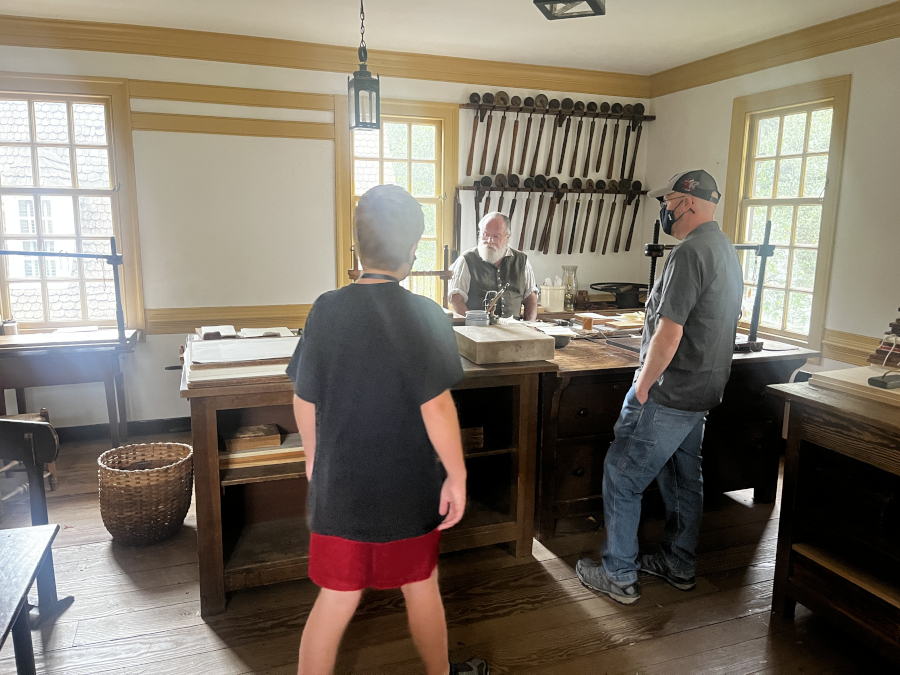
We started at the book binder, since that shop had been so busy yesterday when we tried - and we had the place to ourselves.

Most of the binding in Williamsburg was of blank books - printing and binding a book was required more labor than the town could provide, and it was too cost prohibitive. Mostly the binder created blank volume for record-keeping.

Downstairs was the printer. He was working on printing the paper. Other than the paper, the printer would publish broadsides and the occasional pamphlt, but most work in Williamsburg was for the government, since the Capitol and the House of Burgesses were right down the street.

Operating the press.
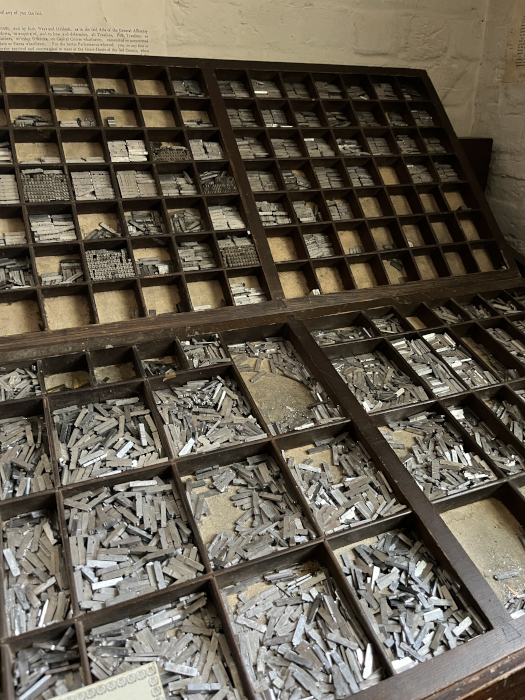
The type - thousands and thousands. The printer said they would have to set 20,000 to 30,000 pieces of type for one edition of the newspaper. All by hand - and some of these pieces are so tiny you have to squint to read them.
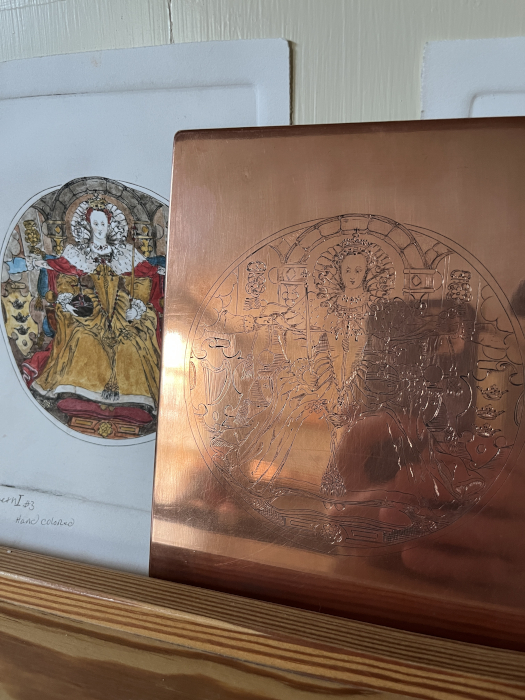
We also visited the engraver again, to get a better picture of a plate and the resulting print.
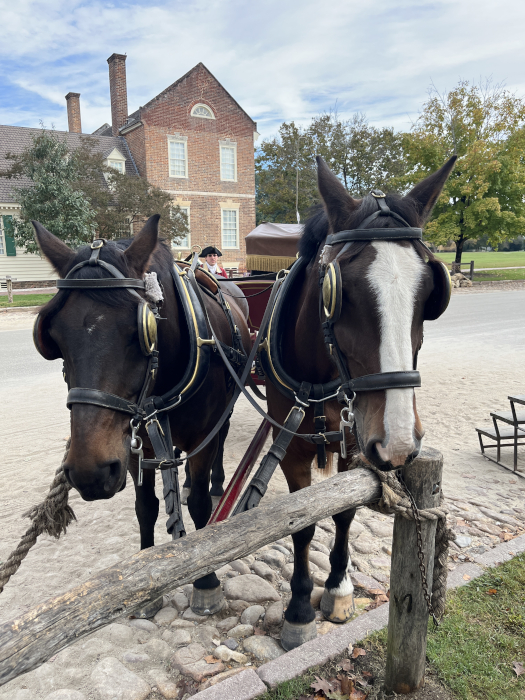
And then we did a carriage ride! Eli is on the left and Jerry is on the right, with the white forehead.
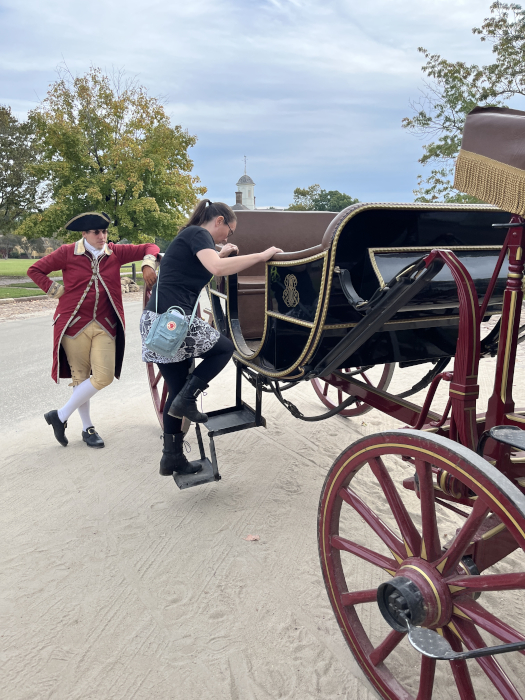
All aboard. Our driver's name was Jacob.
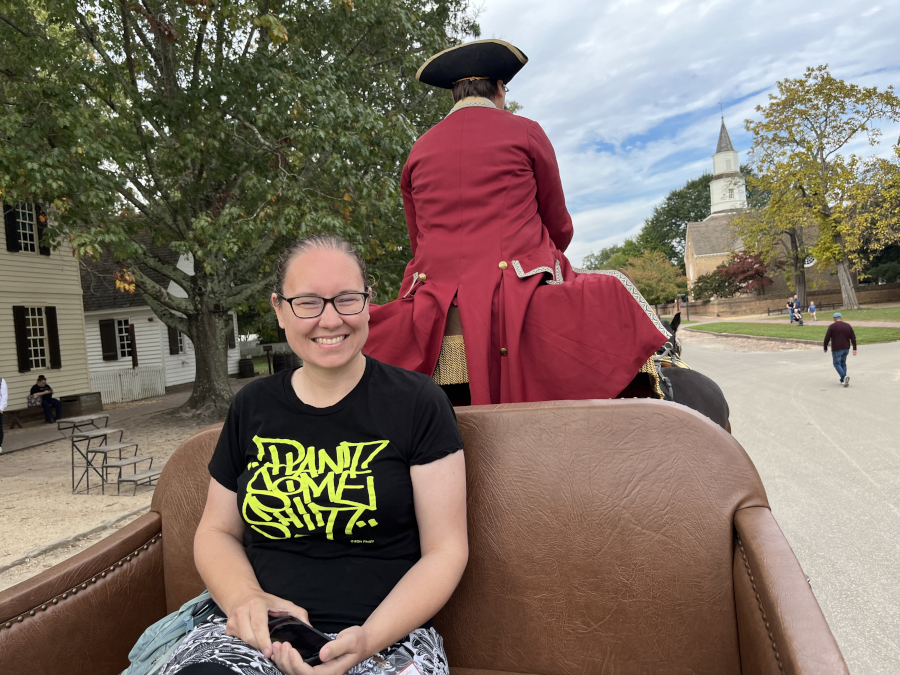
Mom was super excited for the carriage ride.

She waved to everybody!

Dad and I had fun too - I waved to people who were walking their dogs.
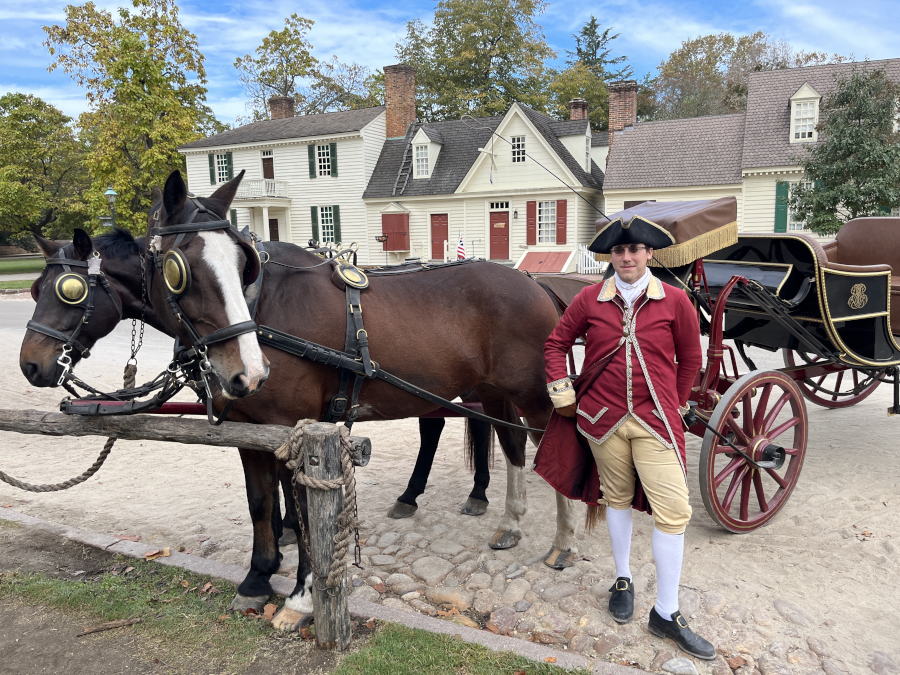
Jacob the driver with Eli and Jerry, the horses.
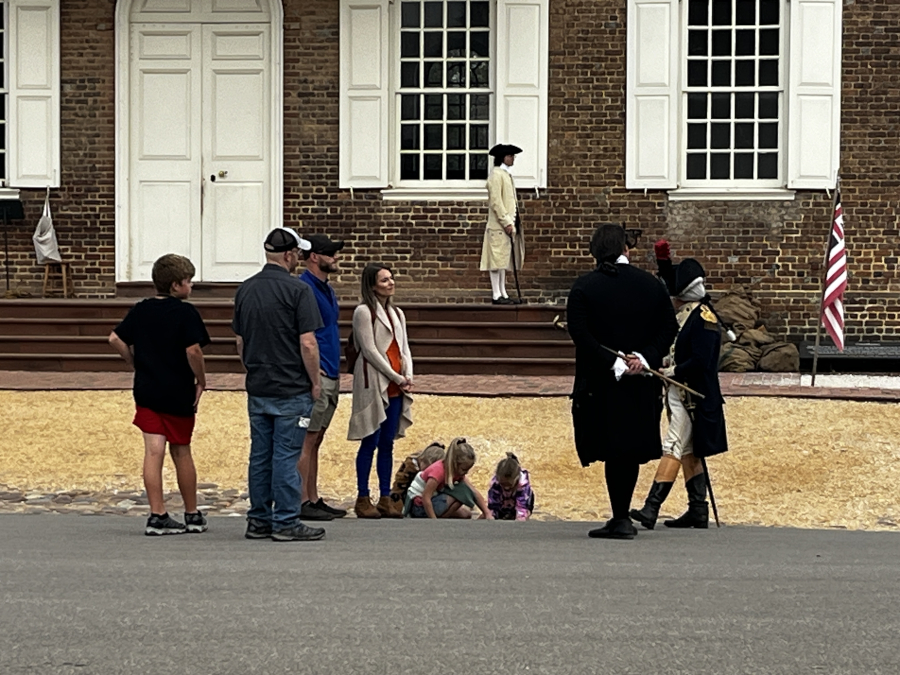
Lafayette was wandering around again, with George Wyeth - so we talked with them.

The Marquis de Lafayette and George Wyeth
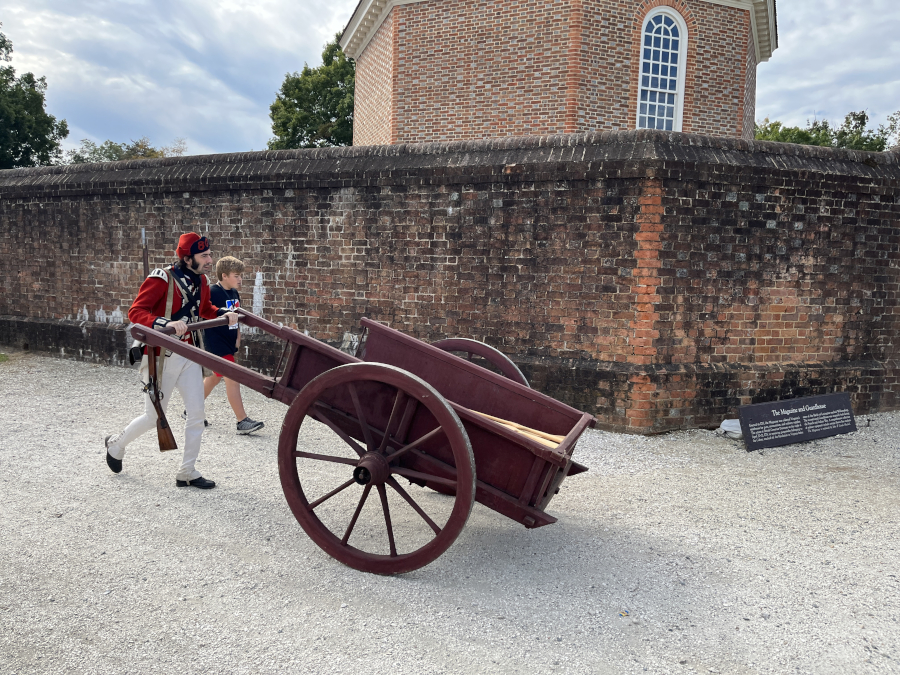
I had to leave the Marquis so I wasn't late for drills.
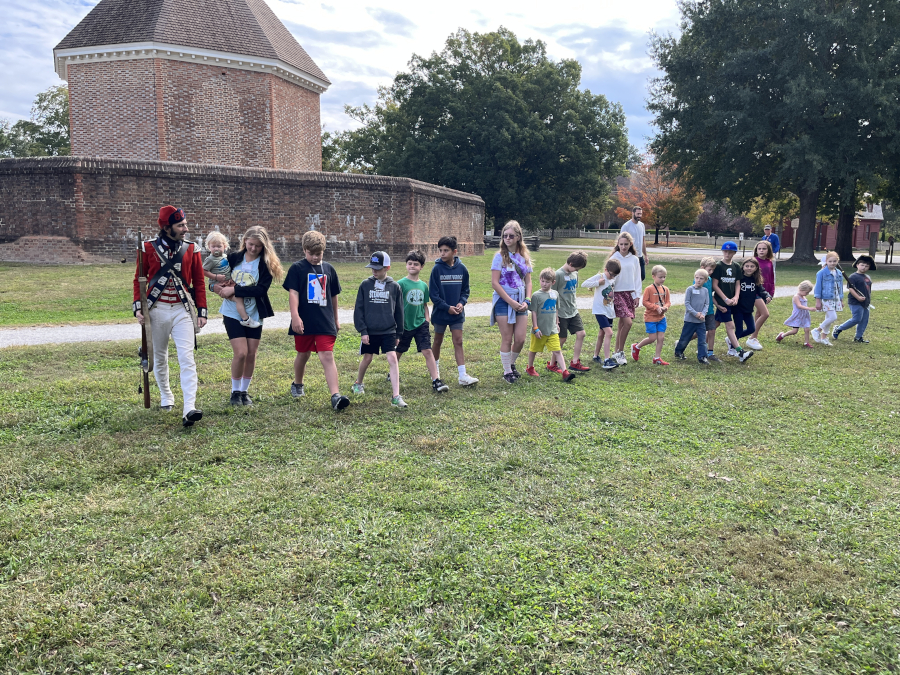
Our group today did better staying in line and turning. Not great. But better.
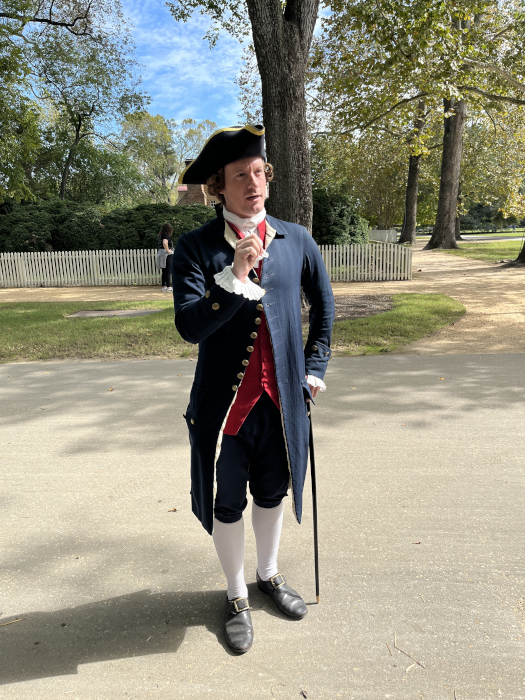
After drills, we talked to Thomas Jefferson for a while. He was really funny - and I answered his trick question correctly. He asked: Who won the American Revolution? And the correct answer was: no one - we are still fighting it every day that we have a representative government.

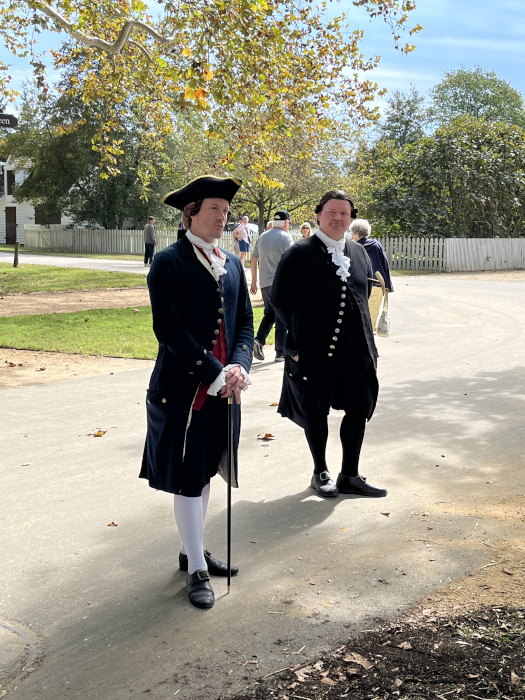
Mr. Jefferson with Mr. Wyeth. Mr. Wyeth was Jefferson's law teacher, and the first chairman of the first law school in America, which was at William and Mary in Williamsburg.
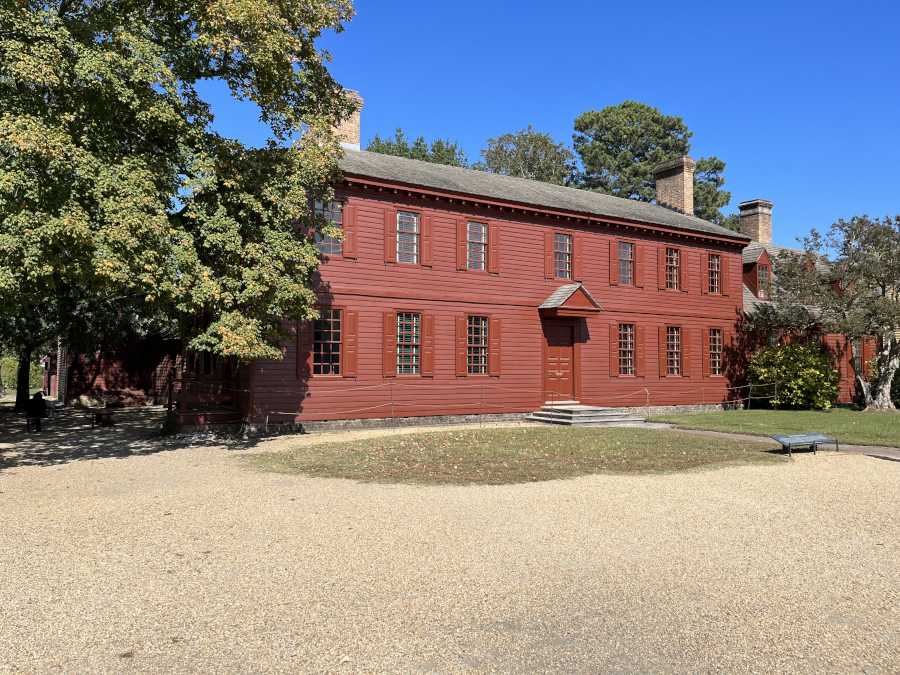
Peyton Randolph's house. Randolph was one of the richest men in Williamsburg, and therefore in Virginia. He was the president of the first and second Continental Congresses, and died of a stroke in Philadephia during the second congress.

The tour of Randolph's house started in the slave quarters - a tiny room shared throughout the day by as many as 27 people.

The laundry room, where all the washing and ironing was done. It was a four-day process requiring skill and back-breaking labor that started with hauling 100-150 buckets of water. And when it was done, start again.
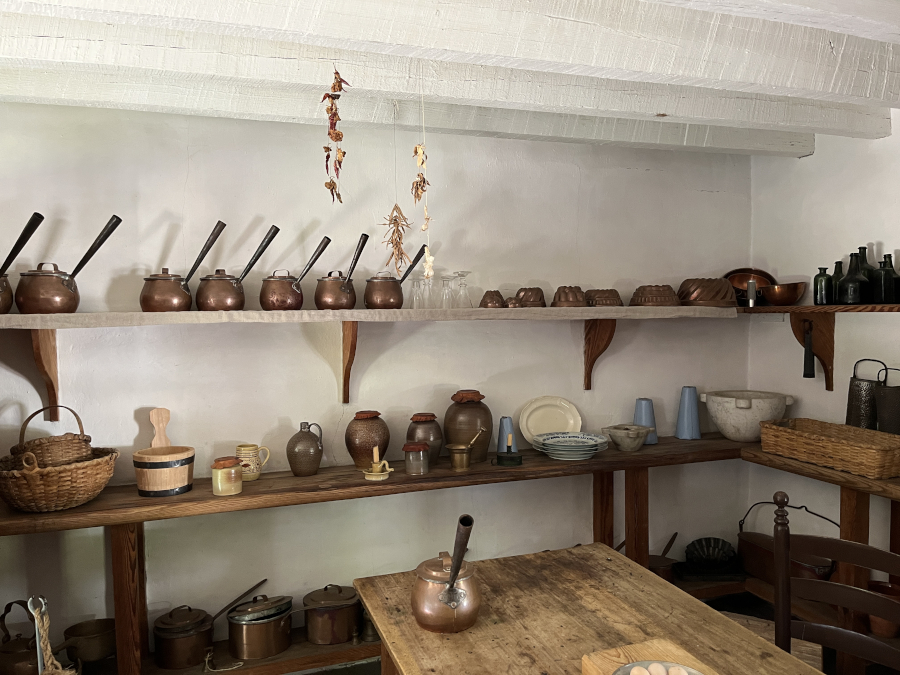
The kitchen. The Randolph's had copper cookware, a very obvious sign of their wealth. Their cook was the equivalent of a Michelin starred chef - she was a slave, but cooked massive, multi-course meals in French and English style for the constant parade of guests that came to the house. The Randolph's entertained almost daily.
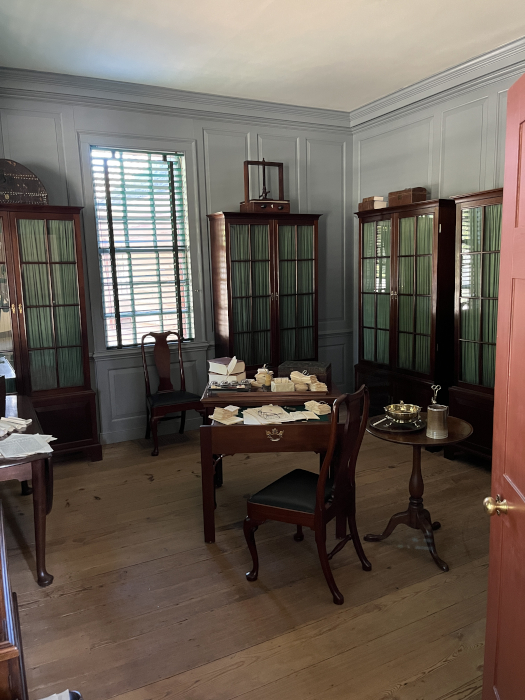
Mr. Randolph's "closet" - which is what they called a private room back then. Really, it's his office. The bookshelves were full when he was alive, and when he died the books went to his cousin, Thomas Jefferson, and ended up in the Library of COngress when Jefferson sold his collection to Congress after the British burned the library in the War of 1812.

Why a picture of a stairway? This stairway makes a statement of wealth and power - it takes up more space than many houses in Williamsburg, and certainly more than most houses in rural Virginia. Along with the fancy wallpaper, and the rounded window, it shows that the Randolphs are immensely wealthy.
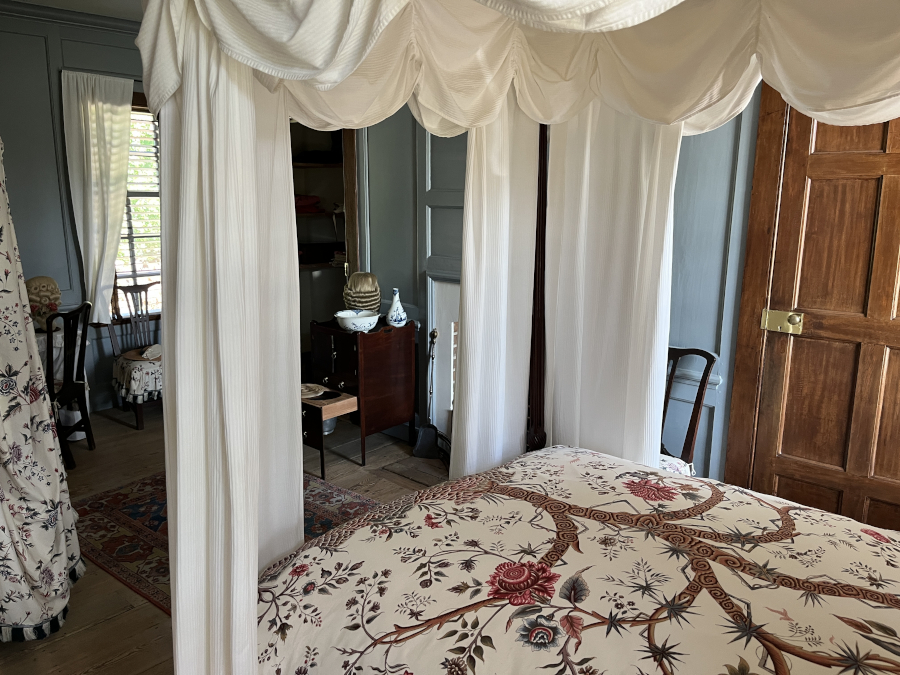
The master bedroom - with two beds. Two slaves slept outside the room, ready to wait on their master's at a moments notice. The Randolph's owned as many as 29 slaves at a time for the household, and many more to work their two plantations outside of town.
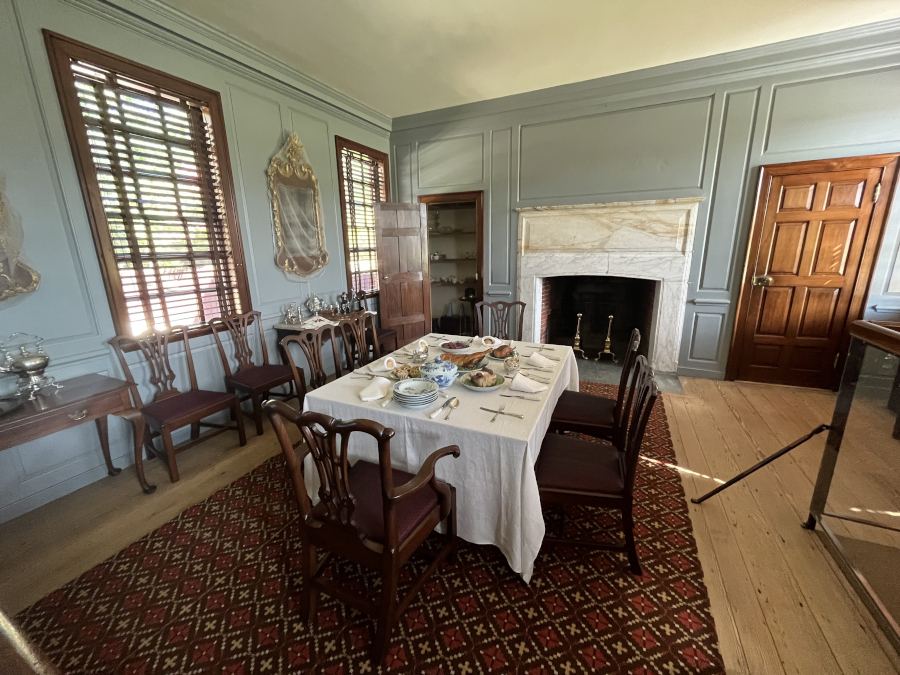
The dining room - with a table set to impress, both with the food and the imported china and elegant silver tableware.

Dad's favorite building.
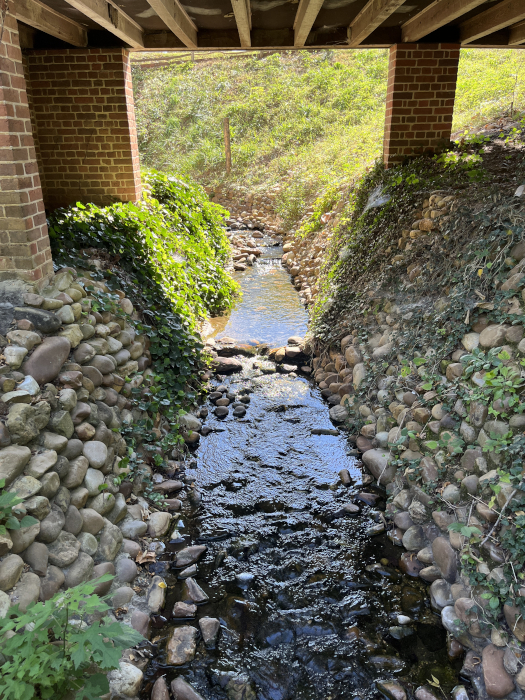
A "river" runs through it.

Inside, they build musical instruments.
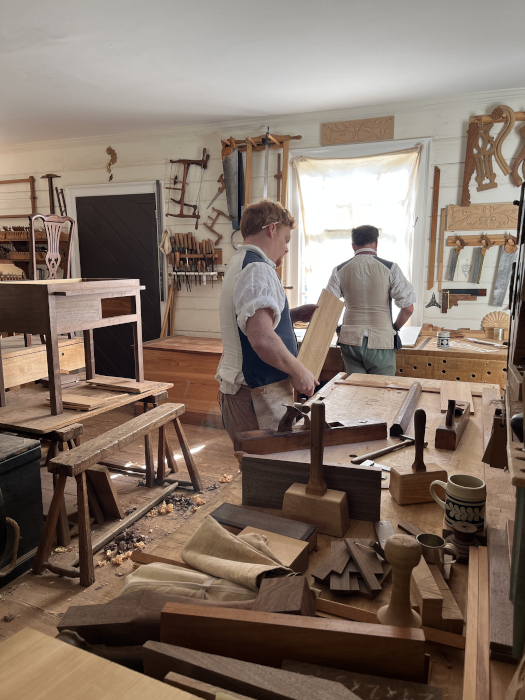
Working away - this is the best smelling shop, other than the bakery.


A work in progress.
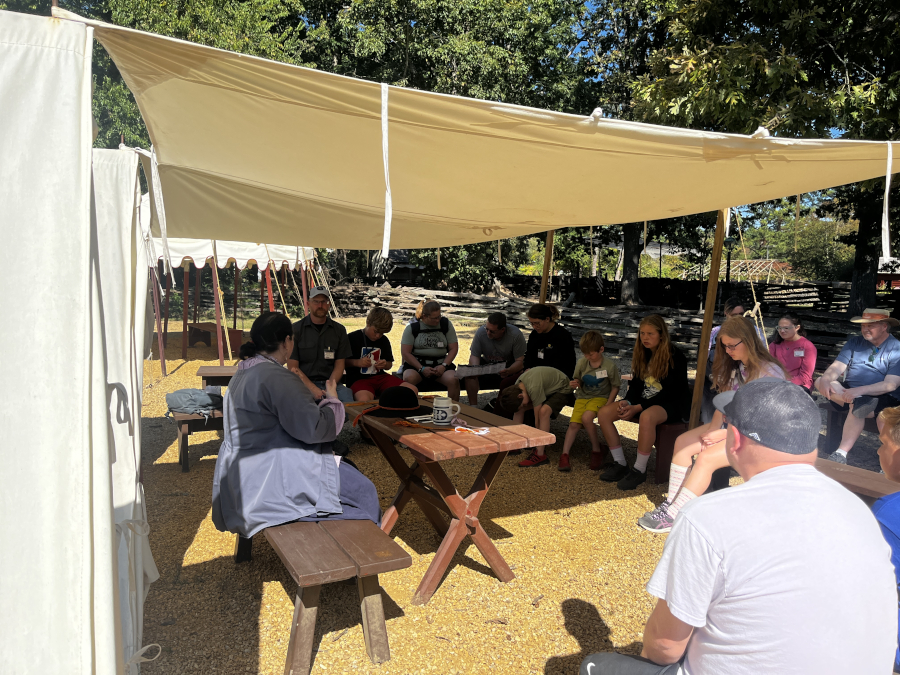
At the Indian Encampment. When the natives would come to the capitol to talk to the governor, the soldier would set up tents for them to stay in during their visit.
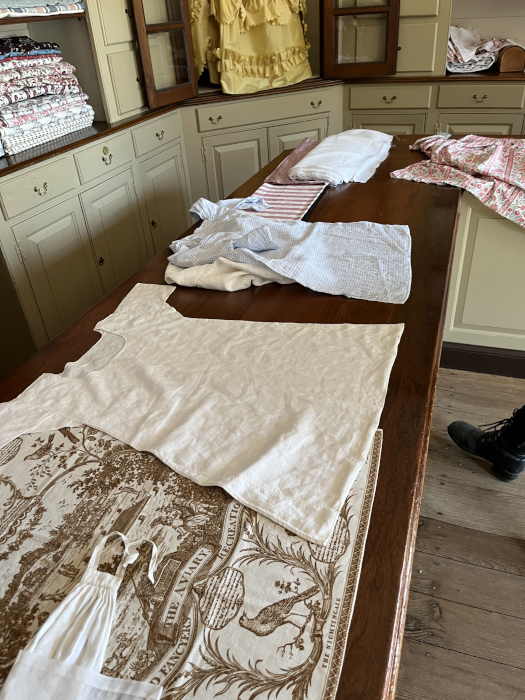
At the milliner's shop.
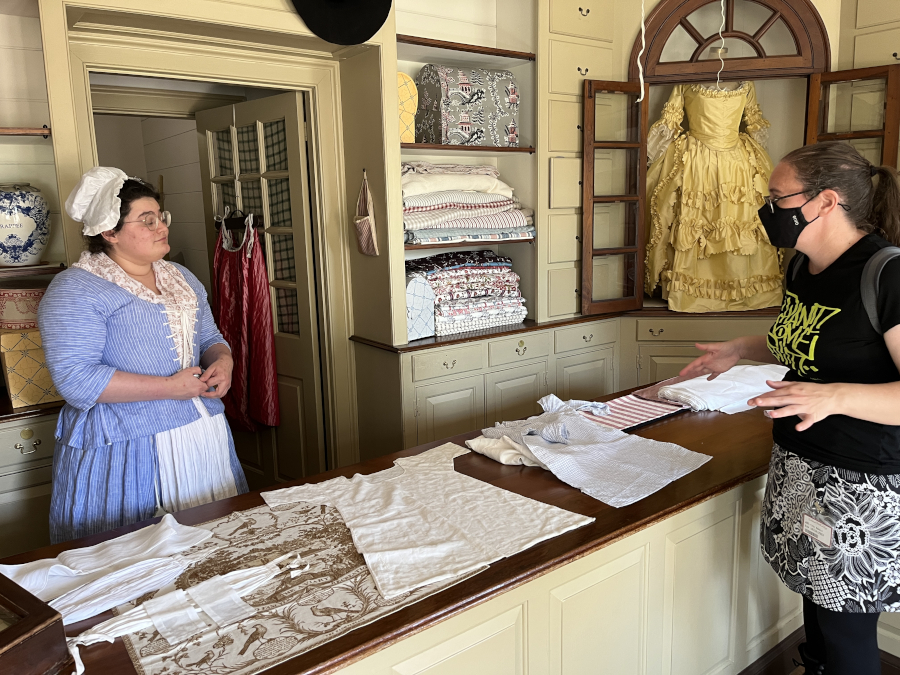
Mom was curious about what they make here - we thought it was just hats, but it is all the smaller items of clothes (underwear!) and shirts as well.
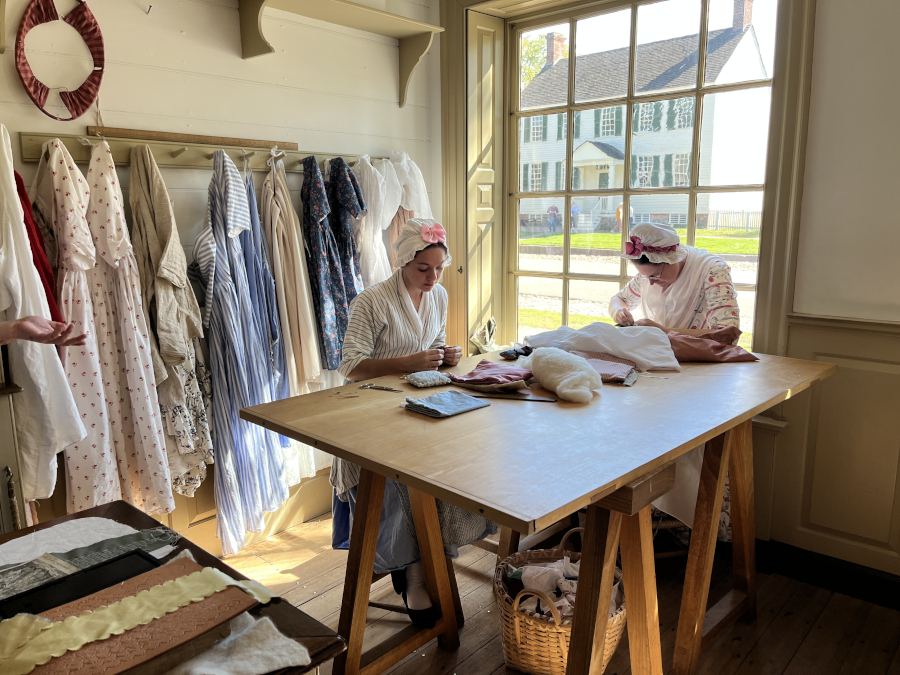

In the wig shop.
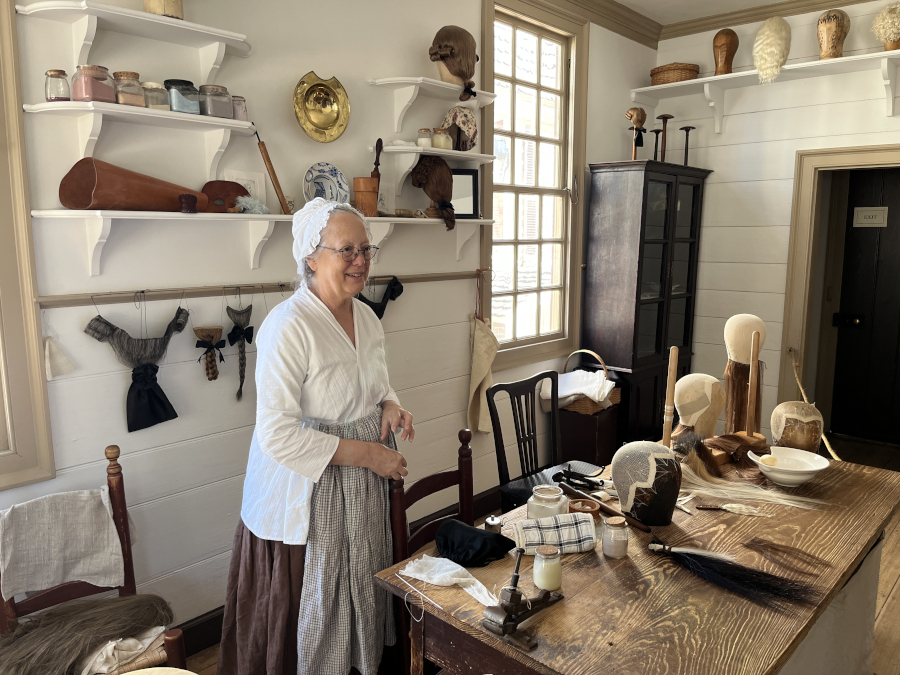
Dad didn't stay long enough to get one.

The Capitol - we've been here before, but now we are taking the tour.
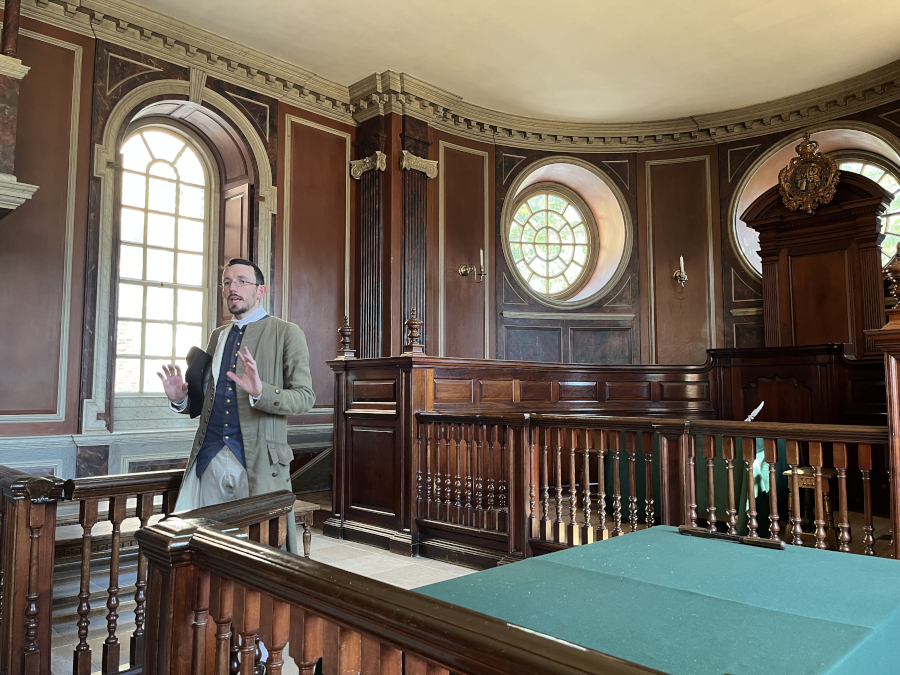
The courtroom - this is where we attended the pirate trial. We couldn't take pictures then, so here's how it looks during the day.
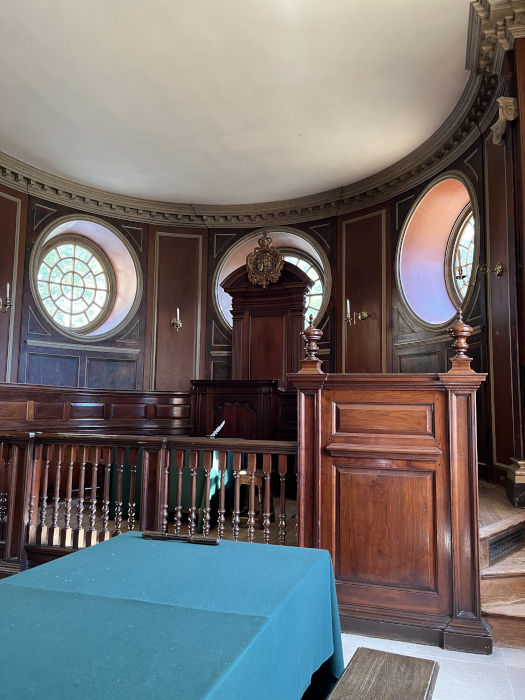

A meeting room above the courtroom.
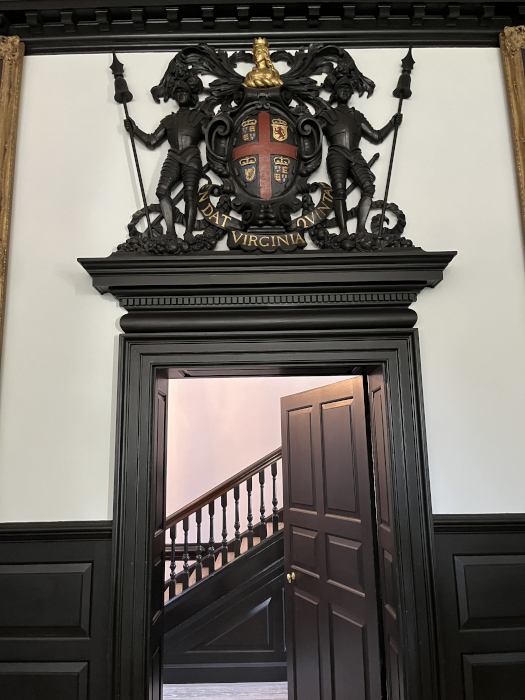
The Virginia coat of arms.
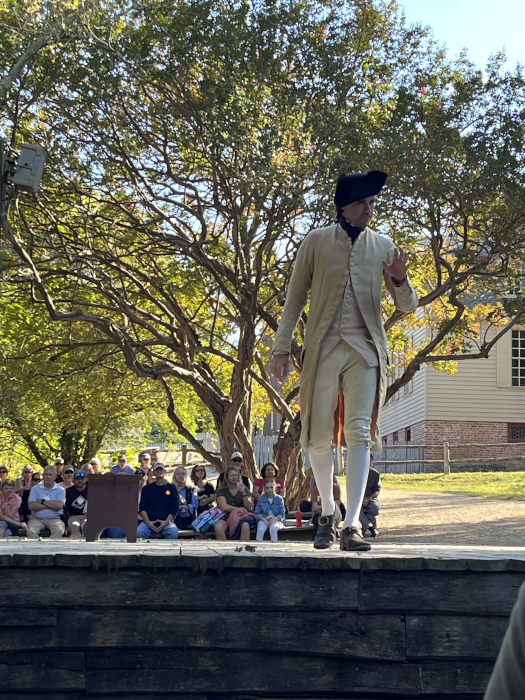
Then we went to see Colonel George Washington (before the War for Independence), talk about his thoughts regarding the behavior of England toward the colonists and the possibility of conflict in the coming years.

Another gun demonstration. This one is a wall gun. It weights 40 pounds and fires a .90 caliber bullet. It's loud.

You might recognize the soldier as my drill sergeant from the past two days.
It takea a few tries before it goes BOOM!

We watched the fife and drum demonstration.
Here's a video of part of the performance.

The county courthouse.

We checked out some of the non-Colonial Williamsburg.

We had pizza at the Mellow Mushroom.
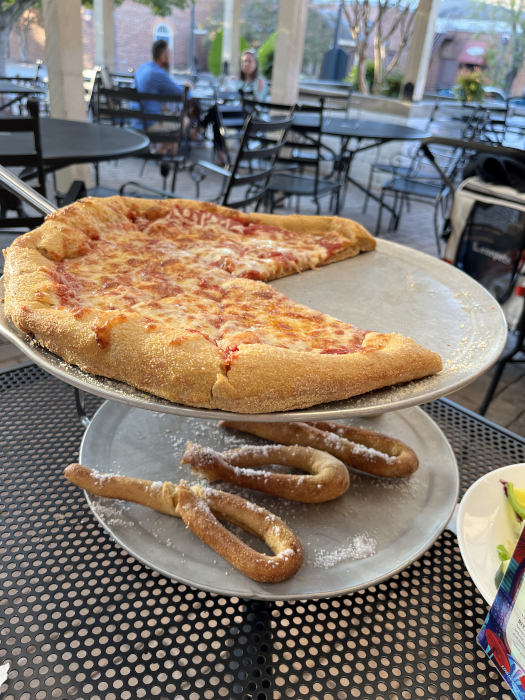
The pizza and pretzel were delicious!
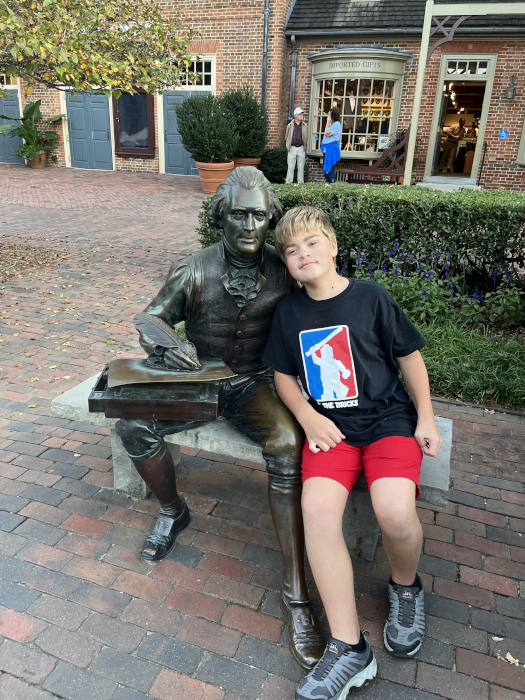
A Jefferson statue on the street.

And we are back at the capitol for another evening program. This one was Revolutionary Points of View. We all got to pretend we were representatives from Virginia deciding to declare independence from Britain. I stood up and talked in front of the whole room (and I was the only kid there). It was awesome.
And then we found our way back to the hotel and went to bed. We were out in Colonial Williamsburg for almost 12 hours! It was so much fun - I can't wait to go back tomorrow!